The Age of Sail was an era when grand sailing vessels fought wars on the high seas and transported goods and people around the globe. From the 16th to mid-19th centuries, these ships carried European settlers to the new world in the largest human migration in history. It was a time when pirates were a harsh reality. These scallywags knew their bow from their stern (except when rum was involved), and they engaged in cannon battles that had deadly effect.
Today, the traditions of those sailing ships live on in folklore and fantasy, in sea shanties and tall tales that fuel our desire to experience the bravado of pirates, to feel the salt-wind bite our faces and to sail the ocean blue, free at last, free at last, without the consequences of the past.
“They come! Ships call! The hooves of night, the horses of the sea come on below their manes of darkness. And forever the river runs. Deep as the tides of time and memory, deep as the tides of sleep, the river runs” (Thomas Wolfe). And so the tall ships from all along the California coast came into port at Dana Point in all their magnificent glory to kick off the 2013 Toshiba Tall Ships Festival.
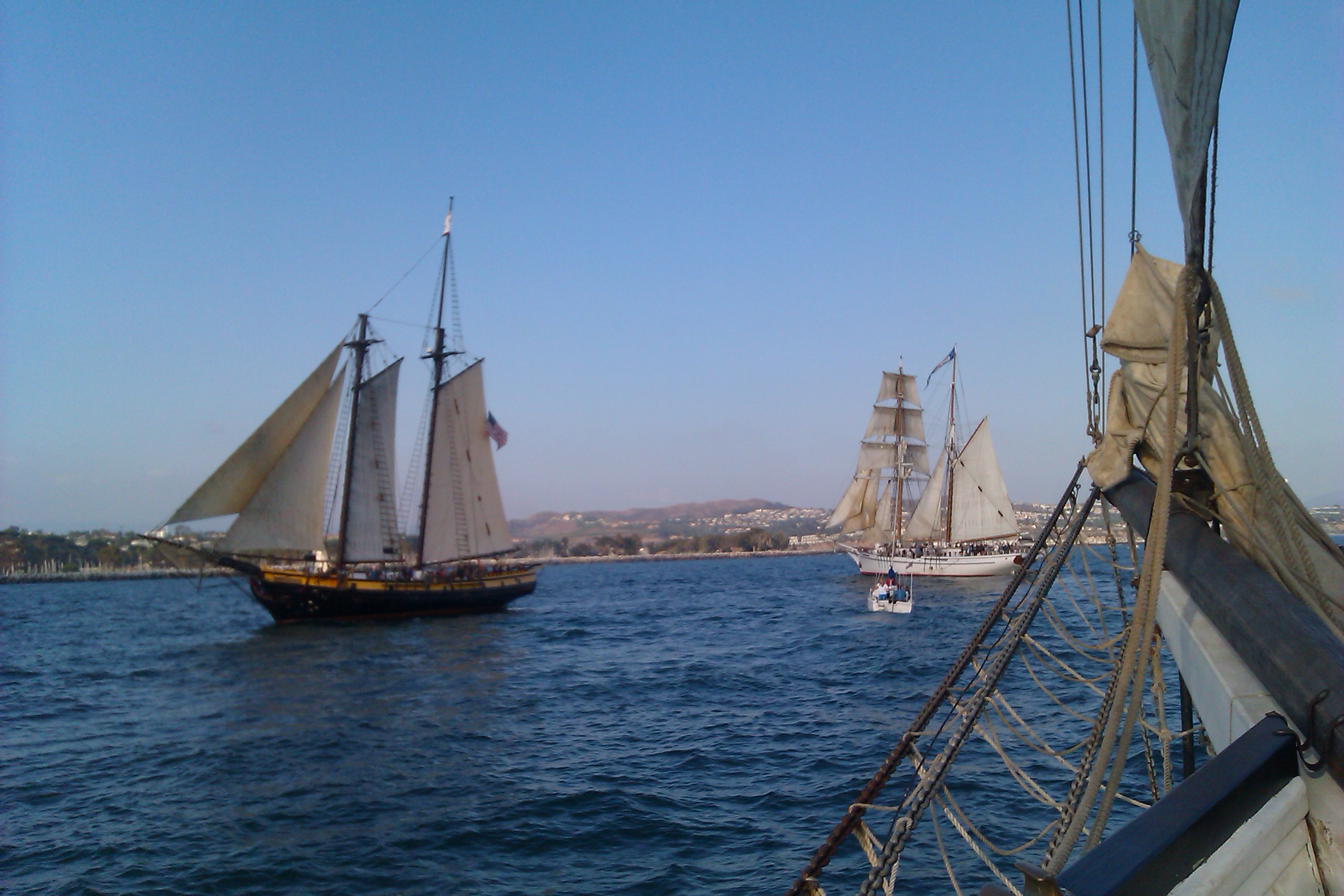
I arrived in Dana Point on Friday night, too late to catch the parade of sail, as I had a full day’s work to accomplish before making a long drive from Los Angeles. I had not gone there to be merely a spectator. I was volunteering on the tall ships Exy Johnson and Irving Johnson to help with deck tours on Saturday and Sunday and to crew a cannon battle on Saturday night.
Dana Point was named after Richard Henry Dana, Jr., who was a 19th century American lawyer and politician best known for his book “Two Years Before the Mast.” The work was derived from his diaries that he kept while at sea, and in it, he described the area around what is now Dana Point and nearby San Juan Capistrano as “the only romantic spot on the coast.” This area is now designated as a California Historical Landmark.
The modern definition of a “tall ship” is a large, traditionally-rigged sailing vessel, built in one of a number of different styles, such as brig, brigantine, barque (or bark), schooner, top-sail schooner, barquentine and full-rigged ship. In general, the type of ship is determined by the number of masts, and the shape and arrangement of the sails.
It is said that the term “tall ship” first appeared in Shakespeare’s play “The Tempest.” In 1956, the term became popular after London solicitor, Bernard Morgan, gathered together the world’s remaining square-rigged ships to race from Torbay to Lisbon. This race captured the imagination of the public and the media, who coined the phrase “tall ships race.”
Enter the 2013 Toshiba Tall Ships Festival, an annual celebration of sailing tradition held in September. This was the 29th year that the Ocean Institute in Dana Point, California had hosted this event (for information, visit www.tallshipsfestival.com). It was the fourth year in a row that I’d volunteered at it.
There were parents toting babies and noble elders who braved the precarious gangways of the ships. Fathers and sons. Mothers and daughters. Families. Lovers. And lovers of the sea. They came dressed in their Sunday best, dressed as pirates, dressed for fun.
The festival had something for everyone, kids and adults alike. There were blacksmiths and scrimshaw artists and the Port Royal Privateers. There were “pirates” and parrots and all manner of sea-related crafts, knot-tying and woodturning. An outdoor stage provided a platform for music of the sea, including John Kraus and the Goers’ updated versions of sea shanties (John is captain of the Irving Johnson).
The Ocean Institute, described as Southern California’s “premier marine educational facility,” provided child-friendly displays of sea creatures, some of them interactive. There were sea stars, jellyfish, rays and octopi. There were squid dissection demonstrations. A Pirate School encouraged kids to walk, talk and sing like a pirate. But don’t worry, parents; no need to wash your kids’ mouths out with soap. It was all done in a family-friendly way.
The stars of the festival, of course, were the tall ships. With the purchase of a Pirate Adventure Pass, one could tour the decks of seven tall ships: Californian, Exy Johnson, Irving Johnson, American Pride, Curlew, Spirit of Dana Point and Pilgrim. Many of these ships are used as educational tools for children to learn about marine science and maritime history, and to develop life-skills.
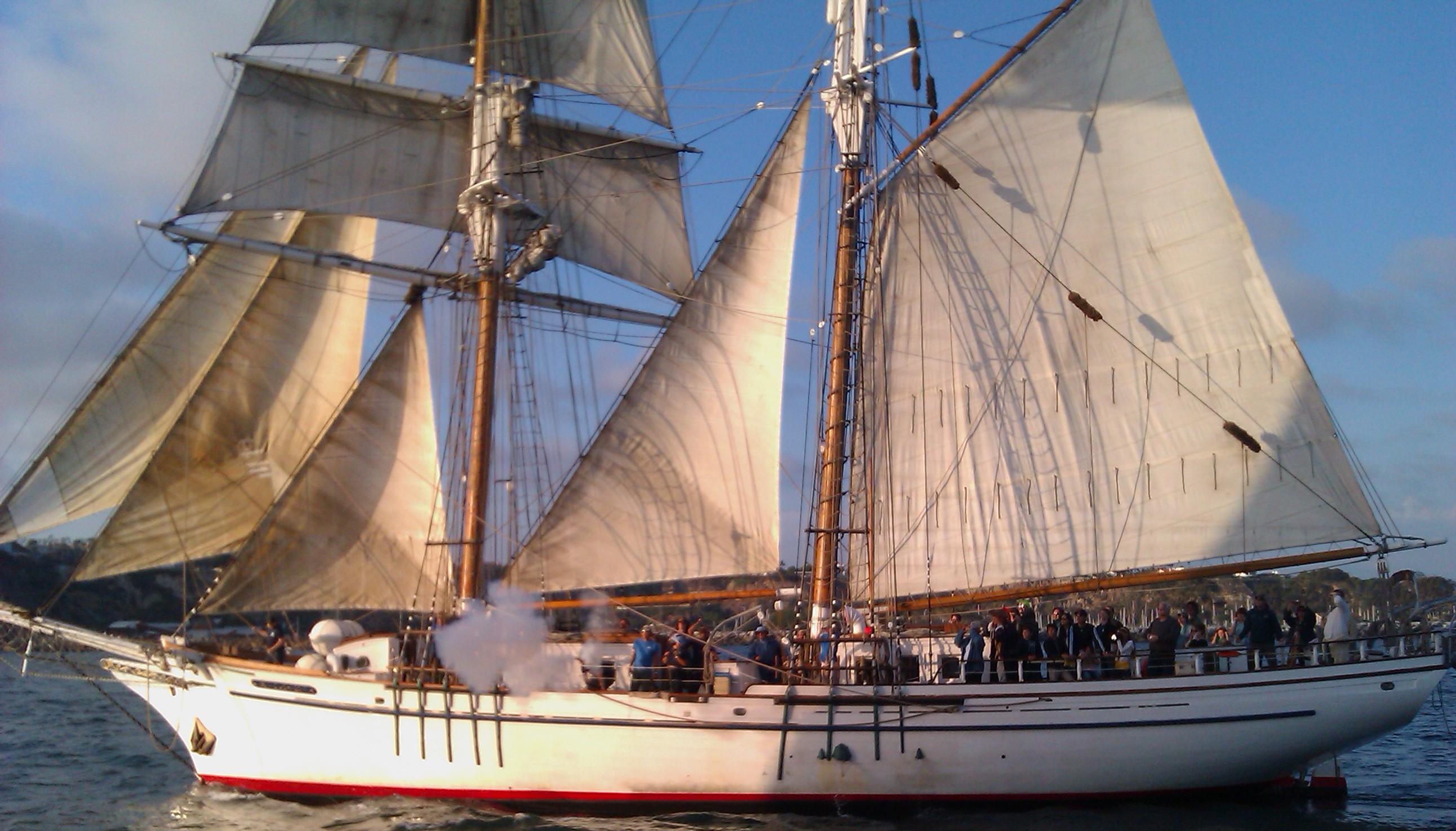
Exy Johnson and Irving Johnson, the ships that I volunteered on, are 111’ purpose-built twin brigantines owned by the Los Angeles Maritime Institute’s TopSail Youth Program. The program teaches inner-city youth how to sail. They learn to work as part of a team and develop self-confidence, leadership, problem-solving and decision-making skills. The ships were launched in 2003 and were named in honor of Irving and Exy Johnson, a husband and wife team and sail-training pioneers, who circumnavigated the globe with young sailors seven times. These brigantines are the official tall ship ambassadors of the City of Los Angeles. For further information, visit their website: www.lamitopsail.org/.
At 145′ overall, the two-masted top-sail schooner Californian has been named the official tall ship ambassador of the State of California and is owned and operated by the Maritime Museum of San Diego. This stately vessel was built in 1984 and is a replica of the 1849 Campbell-class Revenue Marine Cutter C.W. Lawrence. The museum offers educational sailing programs for children and sail training opportunities for volunteers. For more information, visit the museum website at http://www.sdmaritime.org/.
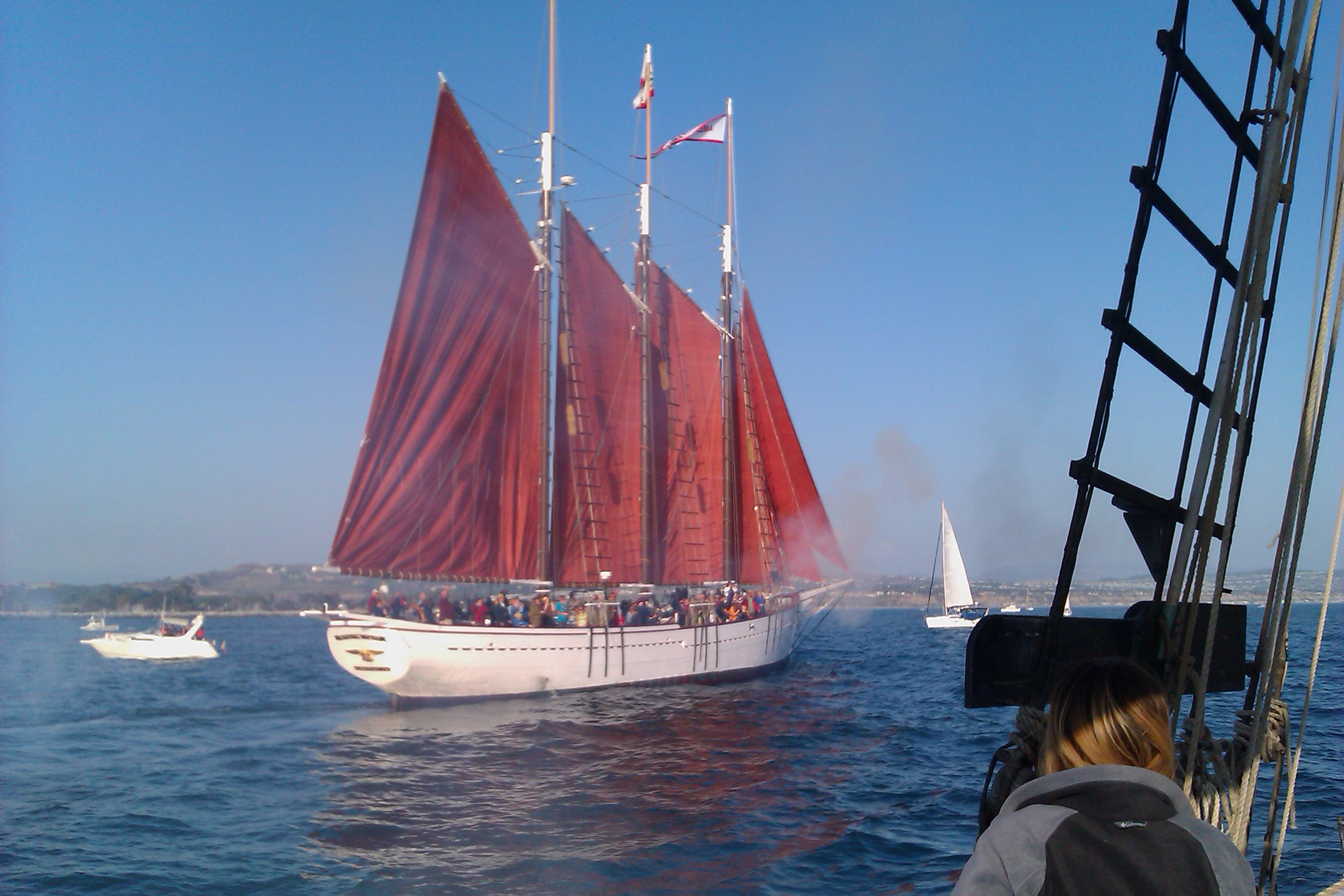
The three-masted schooner American Pride, with her distinctive tan-bark colored sails, was built in 1941 and has a long history as a working vessel. She was purchased in 1996 by the Children’s Maritime Foundation and re-purposed to serve as a classroom for marine science and maritime history in her current home port of Long Beach. Check out her webpage at http://www.americanpride.org/ for more information.
Dana Point is the home port for the Curlew, Spirit of Dana Point and the brig Pilgrim. The Curlew is a graceful little schooner designed by the legendary John G. Alden and was built in 1926 at Fred F. Pendleton’s shipyard in Wiscasset, Maine. Visitors to the festival were able to go below to see her living quarters and admire her stunningly beautiful bright-work.
Built in 1983, and owned and operated by the Ocean Institute, the topsail schooner Spirit of Dana Point is a traditionally-built replica of a 1770s privateer that sailed during the American Revolution. She provides an opportunity for the public to go on sailing adventures and serves as a floating classroom for children to learn about marine science and maritime history. Visit http://www.ocean-institute.org/programs/tallships.html for their schedule.
The 130’ brig Pilgrim, also owned by the Ocean Institute, is a full size replica of the ship that Richard Henry Dana, Jr. wrote about in his novel “Two Years Before the Mast.” She serves as a living maritime history educational program and is usually open to the public on Sundays. She has some Hollywood bragging rights, too. She doubled as the ship Amistad in the movie of the same name. Visit http://www.ocean-institute.org/programs/tallships.html for more information.
With the exception of the Pilgrim, all of the above ships participated in the Saturday night cannon battle. For a fee, the public could ride aboard one of these ships and watch or even participate in the battle activities.
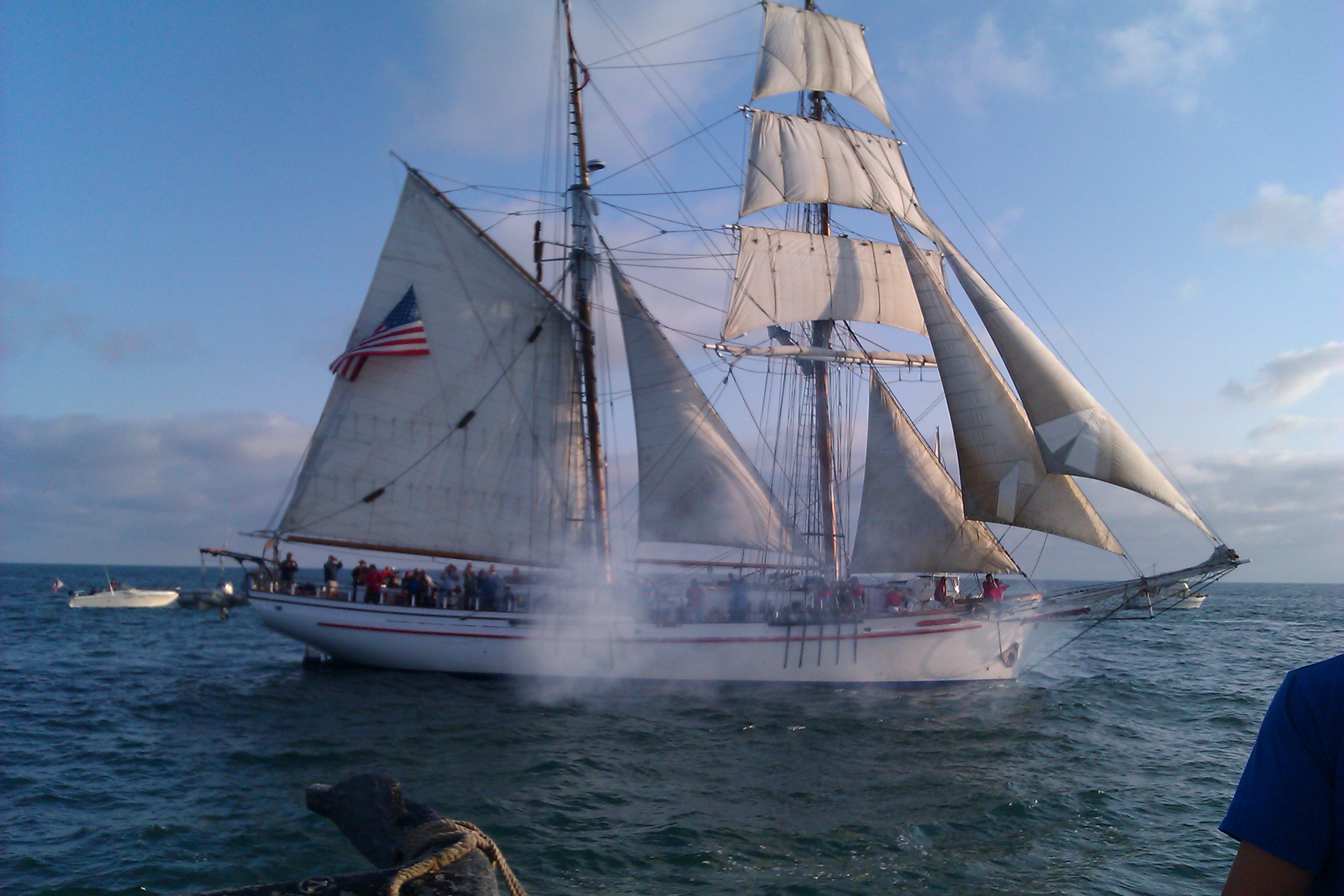
I crewed aboard the Exy Johnson, which has a sizable ship’s gun on the portside. We supplemented this with a small rail cannon that could be moved from one side to the other. Though there were no projectiles in these weapons, we used real gun powder, so there was an element of risk inherent in firing them. The explosions were loud, and the resulting concussion of energy could be felt in the chest and other places, even though the weapons were pointed outward toward passing ships.
“Prepare for cannon fire!” the captain yelled. We plugged our ears, for our eardrums could be damaged if left unprotected. “Fire in the hole!” BOOM!
For our new volunteers, it was a trial by fire (or cannon fire). We were short-handed on deck, had to fill multiple positions and moved from one position to another sometimes very quickly. Everyone needs to start somewhere and the newbies jumped right in and crewed with open hearts and willing spirits. Sometimes this is the best way to learn. Just do it.
We hauled lines and alternately plugged our ears in advance of a cannon blast from our ship. We took cannon fire from both sides as the other ships sailed passed, close on our port and starboard sides. Their noble masts bore sheets of gold in the sunset as they rode the swells and proudly displayed their best aspects.
As we came about to face yet another ship’s gun, we hauled the jibs across the foredeck. We pulled heavy braces to turn the squares. We stopped and held our ears again in expectation of cannon fire. BOOM! We rolled over waves, felt the sting of gun powder in our nostrils, and were bathed in a shower of smoke.
These battles always stir my thoughts and make me wonder what a real battle would have been like. Our battle was fun and nearly innocuous. We could return to our beds in one piece, with perhaps only a little sea sickness. But a real battle with real cannon balls? Well, that’s left for history to tell.
Sailing, whether in a cannon battle or not, has many challenges. It will teach you about yourself and the world around you better than any institution I know. The sea is unforgiving, and yet it feeds the soul. Ships must yield to it, work with it, and sometimes succumb to it.
William Arthur Ward wrote, “The pessimist complains about the wind; the optimist expects it to change; the realist adjusts the sails.” These are wise words indeed, not just about sailing, but about life itself.
Perhaps it was my destiny to be drawn to tall ships and the sea. Since I was a little girl, I’ve loved a John Masefield poem entitled “Sea Fever.” It captured my imagination and swept me into a world of myth and magic and sometimes mayhem. Here’s a piece of it:
“I must go down to the seas again, to the lonely sea and the sky,
And all I ask is a tall ship and a star to steer her by,
And the wheel’s kick and the wind’s song and the white sail’s shaking,
And a grey mist on the sea’s face, and a grey dawn breaking.”
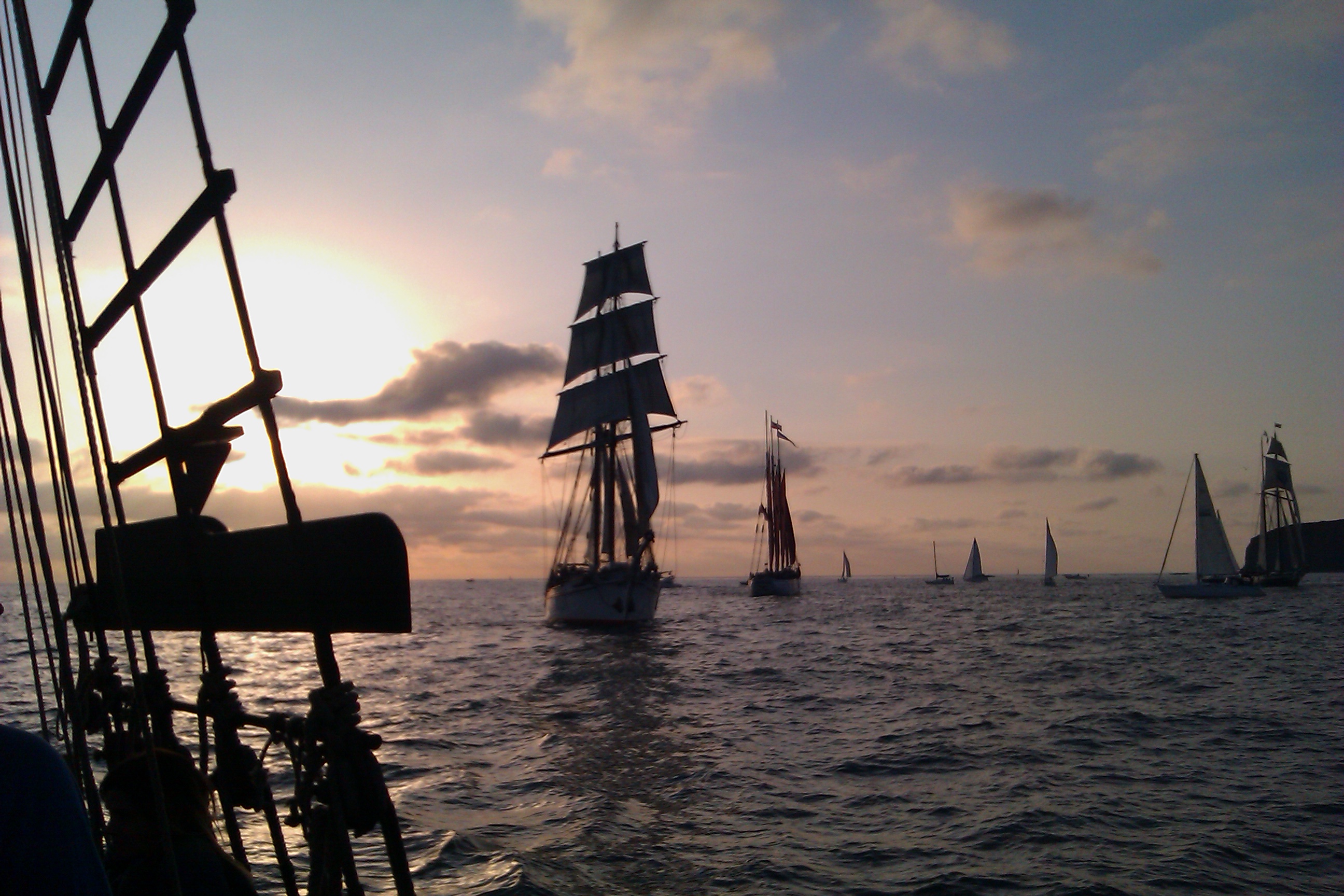
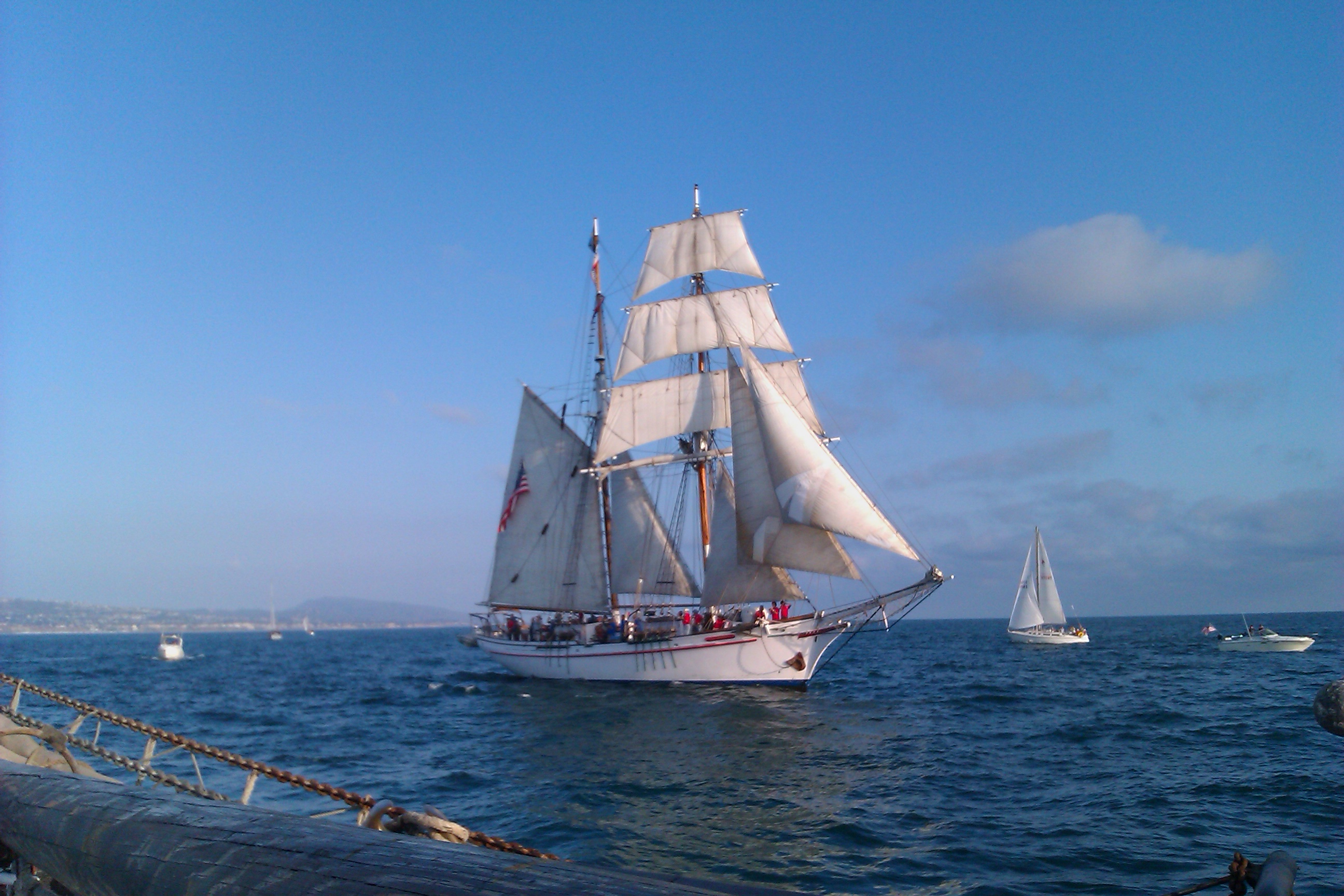



Comments are closed